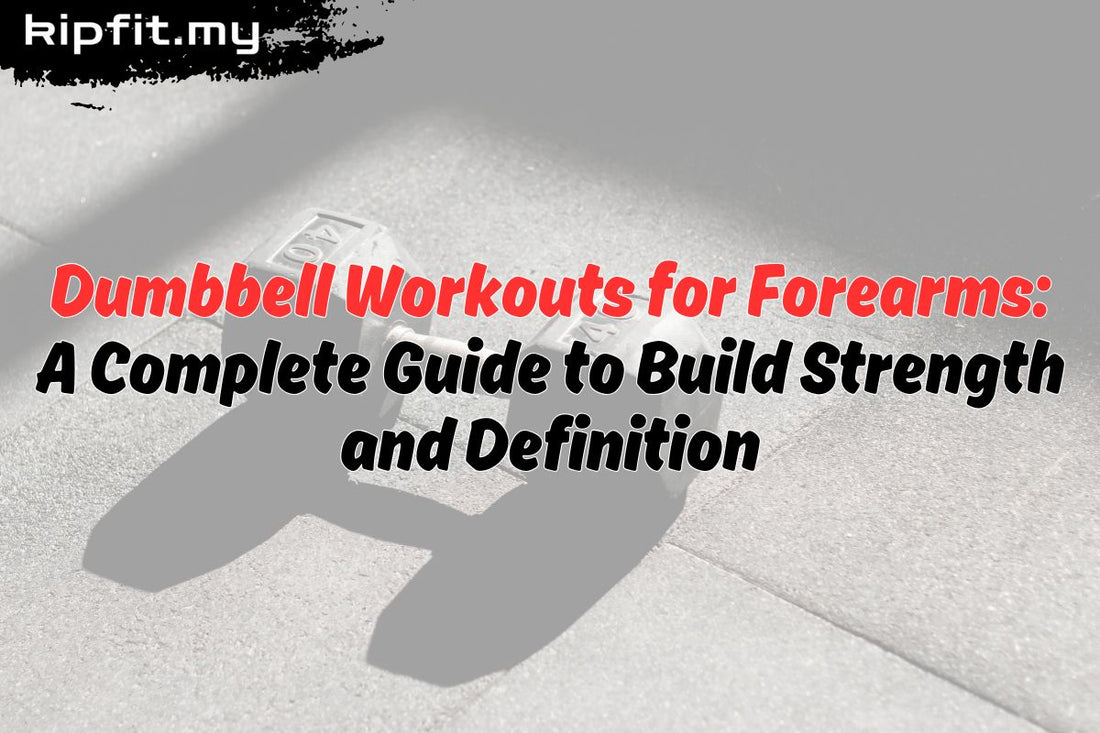Introduction – Why Focus on Forearm Workouts?
Developing strong, defined forearms is essential for boosting grip strength and improving performance in other exercises. Whether you're looking to enhance your dumbbell workouts for arms or simply want to build forearm strength for better overall performance, this comprehensive guide covers everything you need to know about effective forearm exercises. Get ready to transform your arm aesthetics and functional strength with these proven dumbbell workouts for forearms.
The Benefits of Dumbbell Workouts for Forearms
Improved Grip Strength
Enhanced grip strength is vital for performing heavy lifts and supports overall upper-body training.
Increased Muscle Definition
Targeted forearm exercises help develop muscle definition, contributing to a more balanced and aesthetic arm appearance.
Balanced Strength
Strengthening your forearms supports the wrists and elbows, reducing injury risk and improving performance in compound movements.
Versatility in Training
Dumbbell workouts allow for a wide range of movements—from wrist curls to more advanced isolation exercises—making them suitable for both beginners and advanced athletes.
Key Dumbbell Exercises for Forearm Development
1. Dumbbell Wrist Curls
How to Perform:
- Sit on a bench with your forearms resting on your thighs and your wrists hanging over the edge.
- Hold a dumbbell in each hand with a supinated (palms up) grip.
- Slowly curl your wrists upward, contracting the forearm flexors.
- Pause at the top, then lower the dumbbells back to the starting position.
Benefits:
Targets the forearm flexors, improving grip strength and muscle definition.
2. Reverse Wrist Curls
How to Perform:
- Sit on a bench with your forearms on your thighs, wrists hanging over the edge, and palms facing down.
- Hold a dumbbell in each hand.
- Lift your wrists upward in a controlled manner.
- Slowly lower the dumbbells back down.
Benefits:
Works the forearm extensors, balancing muscle development and enhancing overall forearm hypertrophy.
3. Hammer Curls
How to Perform:
- Stand with your feet shoulder-width apart, holding a dumbbell in each hand with a neutral grip (palms facing each other).
- Keeping your elbows close to your body, curl the weights upward.
- Slowly lower the dumbbells back to the starting position.
Benefits:
Targets both the biceps and the brachioradialis, which is key for forearm muscle building and grip strength.
4. Farmer’s Walk
How to Perform:
- Stand tall holding a dumbbell in each hand at your sides.
- Walk a predetermined distance or time, focusing on keeping a firm grip and maintaining an upright posture.
Benefits:
A functional exercise that improves grip strength, forearm endurance, and overall dumbbell workouts for arms.
Additional Forearm Isolation Exercises (Optional)
- Zottman Curls: Engage both the biceps and forearm muscles.
- Static Holds: Hold dumbbells for a set time to improve grip endurance.
- Wrist Roller Exercises: Although not performed with dumbbells, they are effective for isolating forearm muscles.
Tips for Maximizing Forearm Growth with Dumbbells
Proper Form and Technique
- Maintain a Neutral Spine: Especially during wrist curls, keep your back straight and avoid slumping.
- Controlled Movements: Focus on slow and deliberate movements rather than using momentum.
- Full Range of Motion: Complete each repetition to fully engage the muscle fibers.
Progressive Overload
- Gradual Weight Increase: Start with lighter weights and increase the load as your strength improves.
- Consistent Training: Aim to perform forearm workouts 2-3 times per week, ensuring adequate recovery between sessions.
Tracking Progress
- Log Your Workouts: Use a training log or fitness app to monitor improvements in grip strength and muscle definition.
- Adjust Your Routine: Regularly evaluate your progress and modify your exercises or load to avoid plateaus.
Conclusion – Build Strong, Defined Forearms
Incorporating dumbbell workouts for forearms into your training regimen is essential for developing a powerful grip, balanced muscle growth, and enhanced overall arm aesthetics. By mastering key exercises like wrist curls, reverse wrist curls, hammer curls, and farmer’s walks, you can achieve significant improvements in forearm strength and definition. Remember, consistency, proper form, and progressive overload are the cornerstones of an effective forearm workout routine.
Start your journey today to build strong, defined forearms and elevate your overall fitness performance!
FAQs
Q: What are the best dumbbell workouts for forearms?
A: The most effective exercises include dumbbell wrist curls, reverse wrist curls, hammer curls, and farmer’s walks, which together target different parts of the forearm for balanced muscle growth.
Q: How do I perform dumbbell wrist curls correctly?
A: Sit on a bench with your forearms resting on your thighs, hold the dumbbells with an overhand grip, and slowly curl your wrists upward, focusing on contracting the forearm muscles before lowering them back down.
Q: How often should I train my forearms?
A: Aim for 2-3 sessions per week, ensuring adequate recovery between workouts to promote muscle growth and prevent overtraining.
Q: Can I do these exercises at home?
A: Absolutely. These dumbbell workouts for forearms are ideal for home training as they require only a pair of dumbbells and a safe, stable surface.
Q: What are some additional tips for forearm training?
A: Focus on controlled movements, maintain a full range of motion, and gradually increase weight over time to ensure continuous progress.




Recent post